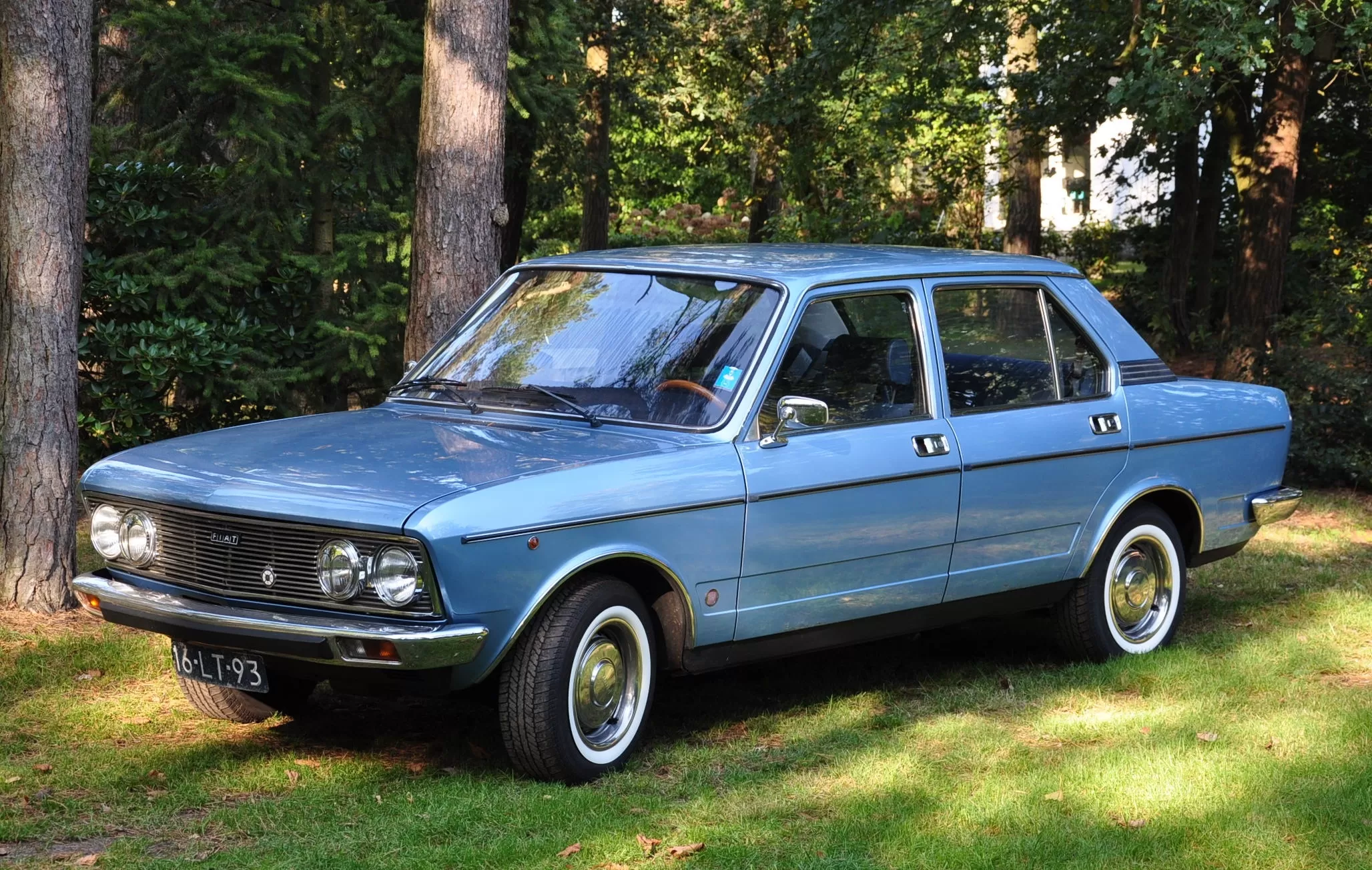
Fiat 132 - the history of the Fiat 125 successor
In the 125s, on Polish roads, he gave chic to the Polish Fiat 126p, an unattainable dream of the average citizen of the country on the Vistula, who, after years of saving, could buy a maximum Fiat 125p or Sirena. In Italy, the Fiat 132, although much more modern than the Polish version, was falling out of fashion and the manufacturer was preparing a successor - the XNUMX.
The Fiat 132 is the direct successor to the 125, based on the technological solutions of its predecessor. The chassis and transmission have not undergone major changes - initially the car was equipped with a 98-horsepower 1600 hp engine, known from the Fiat 125 (the only modification was to reduce the displacement from 1608 to 1592 cm3). However, the clutch was changed, it was simplified and at the same time it was easier to work with than on its predecessor. Power was transmitted through a 4- or 5-speed manual transmission or a three-speed automatic transmission (optional). Of course, always on the rear wheels.
Despite the lack of technological innovations, the Fiat 132 was significantly different from its predecessor. The bodybuilders did the most work, putting together a completely new body that looked massive and solid. The car guaranteed a lot of space inside, had a large trunk (albeit limited by the fuel tank) and, importantly, was safe, given the conditions of the seventies.
The floor plate of the model is reinforced and the body is reinforced with special box profiles. In the cabin, they made sure that the steering column did not crush the driver in the event of an accident. All this made the Fiat 132 a safe car. Solid construction, good price and successful engines made it possible to guarantee a fairly high popularity and produce more copies than in the case of the Fiat 125. Only in Italy in 1972 - 1981 more than 652 thousand units were assembled, and there is also a Seat 132 (108 thousand square meters). . m. units) and a small number of cars that came out of the Warsaw FSO plant. The successor, the Argenta, was basically a facelifted Model 132, but remained on the market nonetheless until 1985, when it was replaced by the newly designed Croma.
At the time of the premiere, the car was considered comfortable, quiet and comfortable, but due to the soft suspension, it could not be considered a car suitable for fast, sharp driving. However, attention was drawn to the well-finished interior and beautiful furnishings. The richest versions of the Special were trimmed in wood and fitted with velor upholstery. Add air conditioning, which is optional equipment, and we get a really comfortable car. However, it must be admitted that climate control in 132 models is a rarity.
Fiat 132p – Polish episode of Italy
The Polish Fiat 132p arrived in Warsaw pretty much already complete, so you can't write that the letter "p" had any meaning for the quality of the car. The last parts were assembled at the FSO factory, and it was more of a prestige-making procedure for the Warsaw factory than a real business. The automotive press (Motor weekly) loudly proclaimed the "release" of a new model of the Polish Fiat.
From 1973 to 1979, a small series of 132p was produced, which only a few could afford. The price is 445 thousand. The złoty effectively scared away the average Pole, who could hardly raise around 90-100 thousand. PLN for Trabant, Syrena or Polish Fiat 126 pence. Even the Polish Fiat 125p, which was the subject of sighs in the seventies, cost 160-180 thousand zlotys. PLN depending on the engine version. In January 1979 Tygodnik Motor reported that 4056 Fiat 132s with "p" stamps had left Zheran. The exact number of cars produced is unknown, since the FSO did not pay much attention to archiving such information.
Difficult start Fiat 132
The first modernization of the Fiat 132 was carried out two years after its premiere, which was quite fast. The modernization was prompted by complaints about the unfashionable design. Fiat redesigned the entire body, lowering the sideline significantly. As a result, the 132 gained a lightness and was not associated with the silhouette of cars of the 1800s. In addition, interior elements, body trim, lamps, shock absorbers were changed, and the 105 engine was strengthened from 107 to 1600 hp. Version 160 has not undergone any changes. The base model still achieved speeds of approximately 132 km/h, while the Fiat 1800 170 GLS guaranteed performance at the same km/h level.
In 1977, another modernization was carried out, which ended the life of unit 1.8. At that time, the buyer had a choice: either he would choose a less than 100-horsepower 1.6 engine, or buy a 2-liter, 112-horsepower version with good performance (about 11 seconds to 100 km/h, 170 km/h). hour). The dynamics of the Fiat 132 2000 improved slightly in 1979, when the motorcycle was equipped with Bosch electronic fuel injection: power increased to 122 hp, which resulted in a higher top speed (175 km / h).
At the end of production (1978), Fiat decided to install diesel engines with a speed of 132 km / h under the hood of the model 2.0. A larger version with a sufficiently long road could reach a speed of 2.5 km / h. The era of turbodiesel did not come until the 60s, when Fiat had a 130-liter supercharged diesel with 145 hp, providing decent performance for the Argenta.
The Fiat 132 hasn't been as spectacularly successful as the Peugeot 504, but is already an interesting piece for Italian car enthusiasts. It is, after all, one of Fiat's last rear-wheel drive cars, representing a segment that the Turin-based company has now abandoned.
